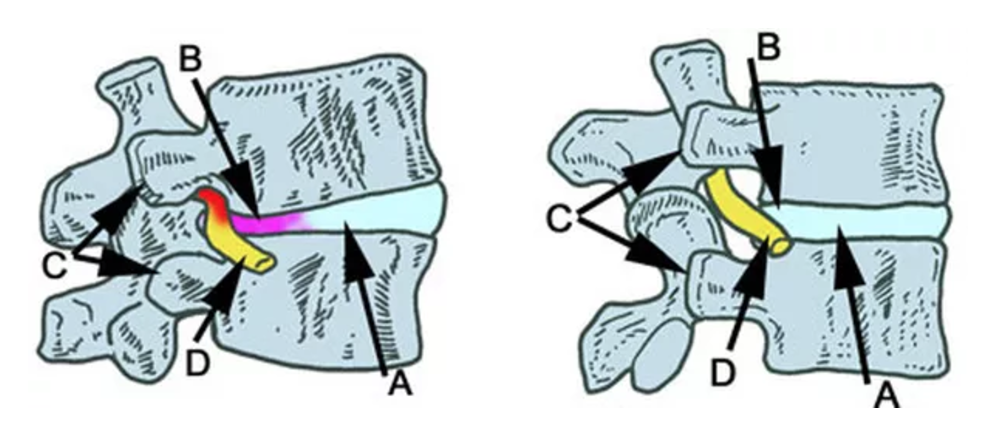An Effective Non-Surgical Treatment for Back and Neck Pain
Non-Surgical Spinal Decompression (NSSD), also known as Spinal Decompression, is effective in treating back pain, neck pain, and sciatica caused by bulging, herniated, and degenerative discs or facet syndrome. Even post-surgical patients and thise suffering from certain types of stenosis (a narrowing of the spinal canal) have reported significant pain refeif fron NSSD treatments.
Unlike Anything You’ve Ever Experienced
Non-Surgical Spinal Decompression, not to be confused with linear traction, slowly lengthens and decompress the spine, creating negative pressures within the discs. This reversal of pressure creates an intradiscal vacuum that helps to reposition bulging discs and pull extruded disc material back into place, taking pressure off pinched nerves. Spinal experts believe that nutrients, oxygen, and fluids are drawn into the disc to create a revitalized environment conducive to healing.
Experts surmise that Non-Surgical Spinal Decompression stimulates the body’s repair mechanism, providing the building blocks needed to mend injured and degenerated discs. NSSD enables the body to get to work and heal itself! Now there truly is hope for lasting releif without drugs, injections, or surgery.
What Is Spinal Stenosis?
Stenosis is a narrowing of the spinal canal due to the encroachment of disc material or bony growths that squeeze and irritate the spinal cord and/or extending nerver roots. This can lead to pain, numbness, tingling, or weakness in the legs, feet, or buttocks. The benefits that many stenosis patients derive from Non-Surgical Spinal Decompression may be due to its positive repositioning and rejuvenating effect on the herniated and degenerative discs that often accompany stenosis. Spinal stenosis, which may be found in conjuction with other spinal conditions, is commonly a contributing cause for sciatic symptoms.
What is Degenerative Disc Disease?
Degenerative disc disease is not technically a disease, but rather a state of disc dehydration and deterioration due to a combination of cumulative trauma, poor dietary and exercise habits, and aging. As discs degenerate they become more prone to failure from physical stress, which may tear disc fibers and result in more complications, such as osteo-arthritis, disc bulging, disc herniation, and stenosis. Many spine experts conclude that the vacuum of negative pressure created within the disc by Non- Surgical Spinal Decompression helps the disc to attract moisture from surrounding tissue, rehydrating and revitalizing thinning and torn degenerated discs.
If You Don’t Use It, You’ll Lose It
Traumatic spinal injuries may cause patients to avoid their normal daily activities. Without treatment, pain will progressively worsen, resulting in decreased physical activity and gradual weakening of the supportive spinal muscles, leading to accelerated disc degeneration.
What is Facet Syndrome?
Facets are the bony, wing-like protrusions extending from the back of the vertebrae that align with facets on the vertebrae above and below, and give the spine a more diverse range of motion. Facets function as guides for the spine and are not designed for bearing weight like vertebrae and discs. Joining adjacent facets are small ligaments called facet joints. It is one of the lesser-known but surprisingly common cause of back pain.
You Are a Candidate fir NSSD If:
-
You have chronic or severe back pain caused by bulging or herniated discs, degerative disc disease, sciatica, and/or facet syndrome.
-
You have failed back surgery syndrome.
-
You have been told to consider surgery.

